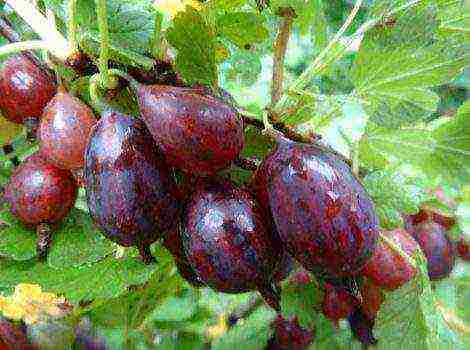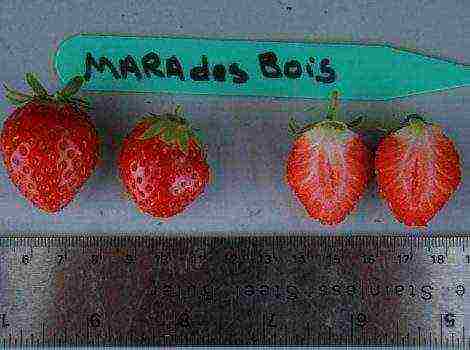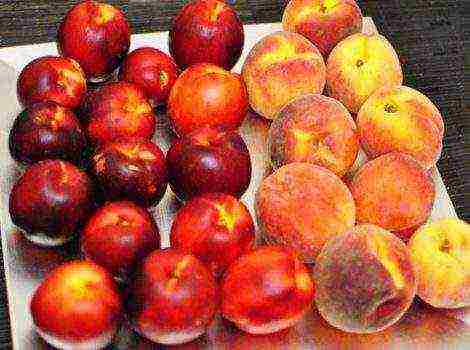Content
- 1 Review of the best varieties of cucumbers for greenhouses for 2017-2018
- 2 Cucumber varieties for greenhouses according to various characteristics
- 3 Reviews of gardeners about cucumbers for greenhouses for 2017-2018
- 4 How to correctly determine the choice of cucumbers for greenhouses?
- 5 How to choose the right variety of greenhouse cucumbers for cooking?
- 6 When do greenhouse cucumbers ripen?
When choosing varieties of cucumbers for growing in greenhouses and greenhouses, you need to pay attention to several parameters. All of them have an impact on the final result - the harvest. Below we will consider the features of selection, and also give the best varieties of cucumbers for greenhouses for 2017-2018 according to gardeners' reviews.
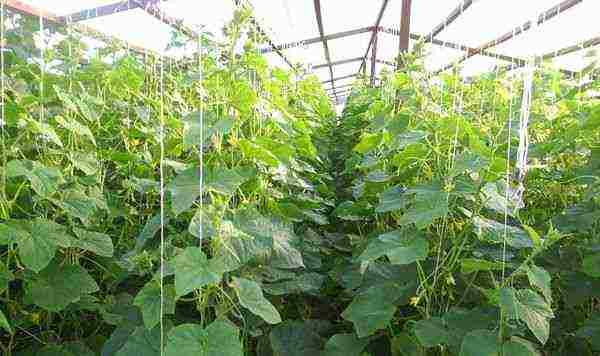
Indoors, 3 groups of modern varieties can develop normally:
- Hybrids with 100% parthenocarp (fully self-pollinated) are the most successful option.
- Hybrids of the female type of flowering (with a predominance of female flowers) are more suitable for semi-open greenhouses; it is advisable to plant several bushes with male flowers to them (for better pollination).
- Chinese variety - hybrid and varietal (non-hybrid) forms. They tolerate temperature contrasts very well. Appointment - mainly salad.
Is it possible to plant different varieties of cucumbers in one greenhouse? Experienced vegetable growers answer this question in the affirmative. It is not recommended to give preference to only one variety, for reliability it is better to plant at least 2-3, from different companies.
Benefits of hybrid greenhouse cucumbers
Selection factors for specific varieties:
- We purchase seeds only from the most reliable companies.
- Almost all modern hybrids do not taste bitter, and this feature is not always mentioned on labels now, this is implied by itself. Bitterness can appear in old varieties or in vegetables from unscrupulous producers.
- Pay attention to the timing of the return of the crop: fast and friendly or extended.
- We calculate in advance the required amount of salad and gherkins.
- The degree of bumpiness ("shirt") is a matter of personal taste. Breeders offer many different options.
- If it is not possible to pay much attention to planting, cucumbers with restrained lateral branching that do not require shaping will help out (these also exist now).
- There are special hybrids for shaded areas.
- Preference should be given to forms with maximum resistance to various infections.
It should be remembered that modern breeding has achieved tremendous success in the field of disease resistance of cucumbers, but they are still susceptible to attacks by insect pests (greenhouse whitefly, spider mites, melon aphids, etc.).
Review of the best varieties of cucumbers for greenhouses for 2017-2018
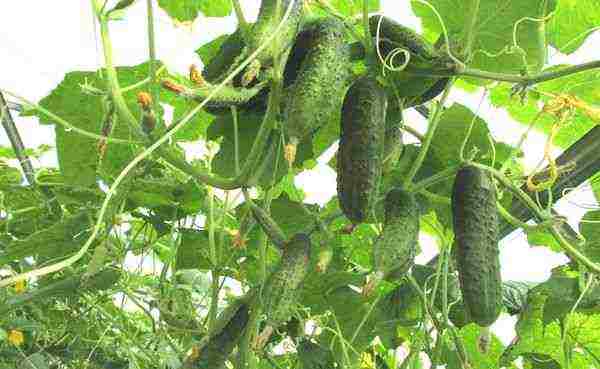
For polycarbonate greenhouses
Polycarbonate greenhouse cucumber varieties are selected with the longest fruiting period and maximum tolerance to pathogens.
Herman F1
One of the most popular cucumber hybrids (beware of fakes!). Dutch selection. Stable and reliable.It bears fruit perfectly in any greenhouses and in the open air. Not afraid of heat, cold snap and disease. One of the first to bear fruit and one of the last to finish.
Bunch ovary (up to 7 pcs.), With simultaneous filling of several fruits in different nodes. Cucumbers are lumpy, strong, medium-sized, high quality, excellent presentation.
Maryina Roshcha F1
Selection of the Russian company "Manul" (Timiryazev Academy). An early hybrid with a long period of fruit formation.
It is not affected by dangerous diseases, including root rot and downy mildew.
Parthenocarp is very pronounced, the ovaries grow actively in any conditions (extreme temperatures, lack of sunlight). One node contains up to 5 pieces. At the same time, more than a dozen zelents can be poured on the bush - large-lumpy, 11 cm in size.
Masha F1
A very early Dutch hybrid with massive early recoil. Moderate branching, the bushes do not thicken. Disease resistance is good. Zelentsy 8 cm, dark, with rather sparse tubercles.
Pace F1
Early ripening (37-42 days) gherkin from the Semko firm. Does not suffer from peronosporosis and other destructive diseases. Light-loving, slightly branched. In a knot there are up to 5 ovaries. Pickle output - 10 kg / sq. m., gherkins - more than 20 kg. The density of the pulp is the highest, the seeds are not felt.
Shchedryk F1
A hybrid from the Russian company "Gavrish" with the entry into fruiting on the 45th day. Tolerant to root rot, peronosporosis. There are 5-8 ovaries in a knot. Cucumbers grow up to 10 cm; the tubercles are large, white-spined. Recoil from a bush - more than 6 kg.
Many vegetable growers prefer to grow this heat-loving vegetable in carbonate greenhouses, where the optimum temperature and humidity are created. The only serious problem is the risk of the rapid spread of harmful insects. You have to be on the lookout all the time.
For foil greenhouses and greenhouses
The best varieties of cucumbers for a greenhouse that is covered with a film must be resistant to sudden temperature changes. It is advisable to select vegetables for greenhouses with genetic resistance to root rot.
In low greenhouses, short-stemmed (bush) forms are convenient.
Adam F1
Mid-early (45 days) Dutch hybrid of the new generation. It is not affected by peronosporosis and other pathogens. The recoil is long-term, uninterrupted. Cucumbers no more than 95 g, very strong; surface with small tubercles. The appointment is universal.
Courage F1
Selection of the Russian company "Gavrish". Fruiting begins one and a half months after germination. The bush is powerful, with a bundle ovary (2-6 pieces), the load of the crop is more than 7 kg. Lumpy cucumbers, size 120 g. Disease resistance - complex.
Okhotny Ryad F1
Super early parthenocarpic from the Manul firm, resistant to peronosporosis and other diseases. Restrained branching. Cucumbers are sparsely lumpy, 8 cm in size. Tufted ovary - up to 6 pieces.
According to my desire F1
Mid-season hybrid of the St. Petersburg company "Biotekhnika" from a series of so-called "single-stem" - with extremely short lateral branches. Does not require shaping. Tolerant to shading, cold snaps. There are 3-4 ovaries in the knot. Zelentsy are sparsely lumpy, crispy.
Miracle toddler F1
A novelty presented by the "Aelita" company. Plants enter fruiting early (38 days from the beginning of the growing season), are distinguished by powerful growth and long-term growth of bundle ovaries. White-thorn cucumbers, 80 g in size, with large tubercles. Productivity - up to 15 kg / sq. m.
Gardeners note that many modern cucumber hybrids grow well even in the simplest, uncomplicated greenhouses. Plants withstand any whims of bad weather with honor.
For autumn-winter cultivation
Special hybrid varieties for the winter greenhouse are resistant to lack of sunlight. Zelentsy are growing large, their purpose is salad.
F1 Olympics
Mid-season hybrid selection "Manul" for winter greenhouses. Long-term yield on lateral shoots: yield reaches 45 kg per sq.meters. Demonstrates high adaptability. The root system is not subject to decay. Fruits are 18 cm in size, lumpy, white-thorn.
Offers from the company "Semko"
- Ararat F1... Smooth-fruited hybrid with greens weighing up to 150 g. Plants show resistance to downy mildew and stress. Recoil - up to 250 kg from 10 sq. m.
- Sapsho F1... A mid-season hybrid that begins to bear fruit 2 months after germination. In each node, 1-3 fruits 15 cm in size are formed, with medium-sized tubercles. The output of marketable vegetables per square meter is more than 20 kg.
- Tatiana F1... The cucumber is mid-season, long-leaved .. The size of the green is 17 cm, 140 g. The tubercles are prickly. General collection from 10 sq. m - 240 kg and more.
Self-pollinated (parthenocarpic)
Almost all modern varieties of greenhouse cucumbers are self-pollinated. They produce only female flowers, and their ovaries grow to the size of green plants even without the access of pollinating insects.
In this case, full-value seeds are not formed.
Heroic Strength F1
Selection of the agricultural firm "Manul". Very early gherkin, with complex infection resistance. Long-term yield on lateral branches. There are 8 or more ovaries in a knot. Cucumbers are lumpy, pubescent, 8 cm in size.
Son-in-law F1
Popular parthenocarpic from the Gavrish company. Comes into fruiting one and a half months after germination. At the nodes, from 2 to 8 zelents 10 cm in size are formed (can be collected at the stage of pickles and gherkins).
Valuable quality - hardiness to downy mildew and powdery mildew, root rot, weather stress. One bush gives up to 7 kg of products.
Claudine F1
An early maturing Dutch hybrid with high quality small tuberous greens. Fruit weight - up to 85 g. Bushes are medium-sized, disease-resistant, fruitful.
Blizzard F1
Early ripening parthenocarpic from Biotekhnika. The lateral branches are short. Fruits are small - 65 g, 7 cm. In one node - 3-4 ovaries. The hybrid withstands waterlogging in the root zone, does not get sick with real and downy mildew.
Prestige F1
Popular gherkin of the Zedek selection. Resistant to diseases, temperature stress, shading. Entry into fruiting - from 42 days. The fruits are pimply, neat, dense, no more than 8 cm in size. The yield is long, at the end of the season - up to 25 kg per square meter.
Early
Early varieties of cucumbers are divided into two categories - with "hurricane" fruiting (rapid, massive formation of the crop) and long-term gradual return.
Blizzard F1
A very early (from 37 days) hybrid from the St. Petersburg firm "Biotekhnika". Not susceptible to damage by downy mildew and powdery mildew. Lateral branching is restrained. There is a simultaneous pouring of more than a dozen fruits; their size is 7 cm.
Maresa F1
Novelty of the Dutch selection; comes into fruiting 38 days after germination. High yield and disease resistance. Cucumbers are small, leveled, of excellent presentation.
Masha F1
Very early (from 36 days) gherkin from Holland with amicable return early. Cucumbers are very dense, 8 cm long, even, dark. Excellent resistance to pathogens, consistent harvest every summer.
Meringue F1
A high-yielding Dutch hybrid with uniform marketable cucumbers. Zelentsy are large tuberous, dense. Fruiting begins 37 days after the beginning of the growing season.
Uranus F1
Ultra-early (36 days) novelty from the Japanese corporation Sakata. The plant is cold-resistant and heat-resistant. Cucumbers of uniform green color, weighing 90 g. Salting qualities are very high.
According to the reviews of most gardeners, early ripening varieties are considered the most attractive.
However, not everyone likes that by the end of the season they have already completed fruiting. That is why it is necessary to give space to mid-late cucumbers. And recently, early maturing hybrids with a very long yield have appeared.
Beam varieties
The varieties of bunch cucumbers are very productive, but they have high nutritional requirements, and some also have bright lighting.
Friendly family F1
Popular gherkin from the Gavrish company. The yield of the crop begins one and a half months after germination. In the nodes of the lateral branches, 7-8 ovaries are laid. The recoil is massive, the disease resistance is at the highest level.
Square dance F1
Early parthenocarpic from the Gavrish firm. The ovary on the main stem is of a bouquet type (up to 10 per node). The fruits weigh 90 g each, they are strong, with large tubercles. The bushes are resistant to cold snaps, do not get sick with downy mildew and powdery mildew.
The output from one plant is more than 6 kg.
Magdalena F1
Dutch novelty for the production of pickles and gherkins with the highest pulp density. The color is saturated. In the nodes, 7 zelents are poured. The hybrid successfully resists attacks from pathogens and temperature stresses.
Beam Charm F1
The newest Russian hybrid from the Aelita company. A bouquet ovary can produce 10-12 tuberous greens.
Miracle bouquet F1
Harvesting novelty of the selection "Gavrish". At the same time, more than three dozen fruits grow on the bush, in bunches of 3-5 pieces. The age of entry into fruiting is from 42 days. Disease resistance - up to date. The yield is long lasting.
Amateur vegetable growers note that the potential of superbeam hybrids is successfully realized only with abundant feeding and good water supply.
Cucumber varieties for greenhouses according to various characteristics
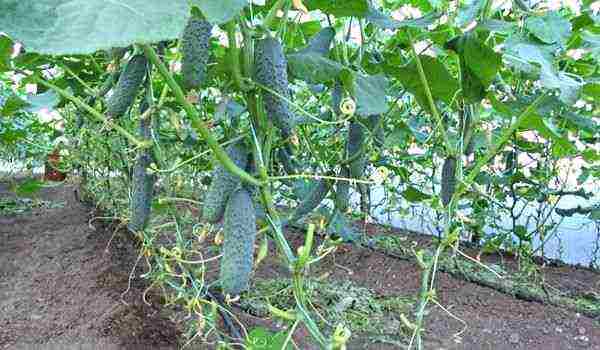
The most productive
The most productive varieties of cucumbers for a greenhouse combine several valuable features: early maturity and a long fruiting period, bundle ovary and genetic resistance to infections.
- Herman F1
- Courage F1
- Marinda F1
- Prestige F1
- Pace F1
- Ecole F1
Sustainable
High resistance to disease and weather stress is an essential requirement for modern cucumber culture. The labor and financial costs for chemicals are reduced, the yield and ecological cleanliness of vegetable products are increased, and the pesticide load on the environment is minimized.
- Barvina F1
- Stay healthy F1
- Great Caesar F1
- Kyoto King F1
- Trump F1
- Focus F1
- Eskimo F1
For pickling and canning
For canning (blanks with vinegar), any cucumbers with dense pulp and small seeds are suitable. It is desirable that they are not prone to rapid overgrowth and thickening ("paunchy").
In the classic (old) version of pickling without vinegar, black-spiked cucumbers are considered the most suitable (the choice of such hybrids, unfortunately, is limited).
- Spring F1
- Crocodile F1
- Goosebump F1
- Robin Hood F1
- Mother-in-law F1
Gherkins
Gherkin varieties are a special breeding line. For the production of pickles and gherkins, special hybrids have been bred.
- Baby Mini F1
- Sankin love F1
- Son of the F1 Regiment
- Pace F1
- Ecole F1
Varieties by origin
Dutch varieties
Holland is the world leader in hybrid cucumber breeding. Particular attention is paid to the complex resistance to infections. The assortment is designed for every taste. As a rule, Dutch cucumbers have a strong (even tough) rind.
Varieties: Claudine F1 (updated Claudia F1), Madita F1, Mila F1, Monisia F1, Cartridge F1
German varieties
The classic "German shirt" is a finely bumpy surface of the fruit. Such cucumbers have an excellent presentation and are good for pickling. Popular old hybrids (Libelle F1, Moringa F1, Ira F1, Rita F1) are bee-pollinated.
Germanic parthenocarpics may be more or less spiny, but they still show high quality zelents.
Varieties: Harmony F1, Ginga F1, Dirigent F1.
Chinese varieties
Chinese long-fruited cucumbers are a special variety. It is attracted by the excellent taste of salad orientation - thin skin, fragrant pulp. Pleases with excellent, stable yield and a high degree of adaptability to various weather conditions.
Varieties: Serpent Tempter F1, Emerald Stream F1, Chinese Gin F1, Chinese Serpent (not hybrid), Beijing Delicious F1.
Cucumber varieties for regions
For the Middle Lane: Walk, Russia! F1, Paratunka F1, Russian motives F1, Russian style F1, Russian feast F1.
For Moscow region: Arbat F1, Connie F1, Moscow delicacy F1, Moscow salad F1, Moscow evenings F1.
For the Leningrad region: Bimbo-Star F1, Joulupukki F1, Karelian cones F1, Lapland F1, St. Petersburg Express F1.
For Siberia: Ob Emeralds F1, Nord Stream F1, Siberian Bouquet F1, Siberian Walker F1, Siberian Express F1.
For the Urals: Everyone envy F1, Our granddaughter F1, RMT F1, Uralochka F1, Uralskiy gherkin F1.
Reviews of gardeners about cucumbers for greenhouses for 2017-2018
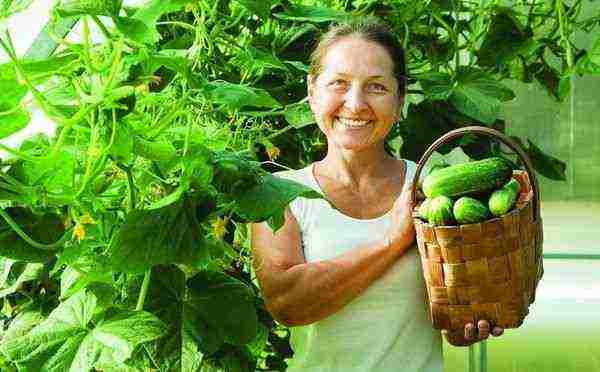
For cultivation in a greenhouse, it is recommended to choose parthenocarpic (in which fruit ovaries pass without pollination) or self-pollinated cucumber varieties.
This will allow you not to worry about attracting bees to the greenhouse by additional replanting of flower plants or spraying cucumbers with infusions of honey or jam.
According to their purpose, cultivated cucumbers can be divided into:
- salad;
- salting;
- universal.
We will define in each of these categories the varieties that received the best reviews from specialists and gardeners in 2017.
The best salad varieties
Cucumbers intended for fresh consumption should be slightly sweet in taste, without bitterness, tender and crunchy. According to many reviews, the following hybrid varieties have such qualities:
- Courage F1;
- Martha F1;
- Tsarsky F1;
- Orlik F1.
“Yielding, very tasty cucumbers”, “Do not get sick, all summer with cucumbers” are typical statements about these varieties.
The best varieties for pickling
For pickling, cucumbers with a dense consistency, small sizes and with a skin that does not prevent the penetration of salt into the fruit are better suited. According to reviews, the following varieties and hybrids fully meet these requirements:
- Vyaznikovsky;
- Altai;
- Great F1;
- Moscow dude F1.
“Beautiful, even fruits”, “Pickled cucumbers turned out to be firm and crispy, very tasty” - these are the impressions consumers share about these varieties.
The best universal varieties
Cucumbers of these varieties should be good to eat both fresh and after heat treatment (canning). Many good reviews received such varieties as:
- Finger boy F1;
- Moravian gherkin F1;
- Northerner;
- Blessed F1.
The list of these wonderful varieties is far from being exhausted. In each of the categories of cucumbers (salad, pickling, universal) there are other good varieties that are in no way inferior to those listed.
Additional recommendations for choosing a variety of cucumbers for greenhouses
For cultivation in a greenhouse, it is better to opt for hybrids (often also called hybrid varieties). Their main advantage over traditional varieties is that they are resistant to all types of diseases.
This is especially important for greenhouses, in which greenhouse (sorry for the tautology) conditions are created not only for the cultivated crop, but also for various fungal diseases and pathogenic bacteria.
This stability, coupled with high yields and ease of maintenance, fully compensates for the increased costs of seeds. To distinguish a hybrid variety from a regular variety, seed producers add the combination F1 after its name.
Good harvests to you!
The best varieties of cucumbers for greenhouses
In greenhouses, it is best to grow cucumber hybrids with shortened lateral whips that do not require formation, that is, you do not need to pinch the lateral shoots. I usually form cucumbers in order to prevent thickening, due to which the harvest of cucumbers falls, in addition, the risk of stem rot and powdery mildew increases, which is not so easy to cure later.
All varieties and hybrids of cucumbers are divided according to the ripening period: early ripening (early), mid-ripening, late-ripening.And according to the method of pollination on: pollinated by insects and parthenocarpic (self-pollinating).
Self-pollinating cucumber varieties
If you want to have the earliest fresh cucumbers on the table, then opt for self-pollinated varieties. After all, we usually plant early cucumbers in a greenhouse, since there are no insects in April in the middle lane yet, that is, there is no one to pollinate the flowers.
Self-pollinating varieties of cucumbers give high yields. And the hybrids are unpretentious and practically not susceptible to diseases, moreover, there is no particular trouble with them with the formation of a bush.
Herman cucumbers are the best representative of Dutch hybrids
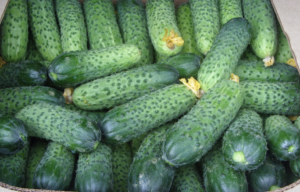
Today it is the most popular cucumber variety on the Russian market. Early maturing, high-yielding. The authors of this hybrid are Monsanto Agrofirm. In 2001, German F1 was included in the state register of the Russian Federation (approved for use in all regions of Russia). Suitable for both greenhouses (greenhouses) and open ground. The period from full germination to fruiting is 40–45 days.
Push: there is no bitterness at all. An early hybrid, very hardy. When the temperature drops to +9, it feels great, only slightly "inhibits" the growth of zelents. Cucumbers grow 10-12 cm long. I use it for salads and for canning.
Zozulya cucumbers, excellent early hybrid
Cucumber Zozulya F1 - early maturing (45-50 days from germination to fruiting) hybrid with fruits with thin skin. Known since 1977.
Cylindrical cucumbers with slight tuberosity, dark green color with slightly pronounced light stripes, light thorns. Zelentsy reach a size of 14-22 cm, with an average weight of a ripe fruit of 140-300 grams. With good care, the harvest for the first month per square meter is 8-12 kg.
Push: I have been growing for 10 years. Never let me down. Cucumbers up to 25 cm long are very good for pickling in a barrel. Always amicable ripening, resistant to various rot. Suitable for both greenhouses and open ground.
Cucumbers Dynamite, photo
Cucumber Dynamite F1 - parthenocarpic, salad, canning, pickling hybrid. It starts bearing fruit 40-43 days after full germination.
The plant is indeterminate, vigorous, medium-branched, female flowering type, with bundle-shaped ovaries. The leaf is medium-sized, green, smooth, irregularly serrate along the edge.
Cucumbers are cylindrical, green with smeared stripes up to 1/3 of the length, medium-sized tubercles, sparse, brown pubescence. The average weight of a cucumber is 100-120 grams, length 12-14 cm, diameter 4.0-4.5 cm. Taste qualities of fresh and canned fruits are excellent.
Yield: 15-18 kg of fruits per 1 sq. meter of planting (in the presence of watering and dressing).
Push: climbing, therefore requires freedom. It goes well in salting, and in pickling, and in salads.
Cucumbers Zyatek, description, characteristics

Zyatek F1 is a parthenocarpic hybrid of early ripening (42-48 days from germination to fruiting), bred in the Russian breeding and seed company Gavrish (Moscow). In 2007, the variety was entered into the state register of plants in Russia. Designed for growing in protected ground, but also suitable for open ground.
Plants are indeterminate, medium branched, female flowering type, with bundle ovaries. In one node, an average of 3 - 4 cucumbers are formed (maximum - 6-8 pieces). The leaves are green, medium in size.
Fruits are medium lumpy, cylindrical, 10–12 cm long, weighing 90–100 grams. The skin is soft, green, with short light stripes. Frequent pubescence. The thorns are white. The pulp is dense, good taste, sweetish, without bitterness. Long-term fruiting - throughout the summer season.
Yield - 13.2 kg / sq.m. One plant produces 5 - 7 kg of fruits.
Push: I planted it for the first time last year, this year I will definitely plant more. Very tasty at the stage of milky ripeness (gherkins). The harvest is high, the ripening period is up to 48 days. Cucumbers up to 10 cm long, with pimples.
Early varieties of cucumbers for greenhouses
Early varieties of cucumbers are a real find for residents of the northern regions and the middle zone, since every summer day is valuable to us, and especially early, early ripening and ultra-ripe varieties of cucumbers and other vegetables.
Cucumber Elegant, description, photo
A bee-pollinated variety, it produces a large number of male flowers and this property allows it to be used as a pollinator for other varieties. Cucumber variety Graceful is intended for growing in open field and spring film greenhouses. Plants are medium-growing, form up to 5-6 lateral shoots.
Cucumbers are leveled, elliptical, with small tubercles, 9-12 cm long, weighing up to 150 grams. The skin is thin, light green in color, with white stripes and a white top. The pulp is juicy, crispy, sweetish, without bitterness. Low yield: 5-7 kg / square meter. A variety of salad type, but it is also used for canning.
Push: I think one of the best in this category. Its fruits have a wonderful aroma and the first cucumbers can be removed already 38 days after germination.
Cucumber Muromsky 36, characteristic of the variety
An old bee-pollinated early ripening variety of cucumber. Designed for growing in open ground and under temporary film shelters. The period from full germination to fruiting is 32 - 42 days. The length of the central whip is 100–160 cm. Plants are well leafy.
Cucumbers are oval-elongated or ovoid, almost round in cross-section, with very small, sparsely located tubercles, 6 - 8 cm long, weighing 50–70 grams. The skin is light green with distinct longitudinal white stripes. The pubescence is mixed. The thorns are black.
Yield small - 2-3 kg / sq.m.
Push: very early variety. Many gardeners like it because the more often you collect it, the more fruits grow.
Cucumbers Competitor - out of competition
An old bee-pollinated variety of medium-early cucumber (the period from germination to fruiting with spring planting is 45-50 days, with summer planting - 29-30 days).
In 1980, the variety was added to the state register of the Russian Federation. Plants of this variety are powerful, slightly branched, with a long main stem. The length of the stalk is 5–7 cm, which makes harvesting easier.
Fruits are oval-cylindrical, ribbed, large tuberous, small (9-12 cm long, weighing 70-100 grams). The skin is green, with blurred white stripes of medium length. Frequent pubescence. The thorns are black. The pulp is dense, crispy, aromatic. Average yield - 3-5 kg / square meter.
These cucumbers are very good in salted and pickled form, which is confirmed by numerous reviews of gardeners, however, both fresh and in salads are valued just as highly.
Push: excellent in preservation - tasty, crispy. Fruits are only 10 cm long. There are no problems with diseases, the main thing is not to create stagnant moisture.
If you have any additions to the article, please write in the comments. What varieties of cucumbers do you grow? What are the best varieties of cucumbers at the end of 2016? What new varieties of cucumbers have you already purchased for 2017?
Your reviews and additions will help many gardeners choose the best varieties of cucumbers for planting.
In order to get a decent harvest of cucumber crops in a temperate climate with unpredictable weather changes, it is better to use the cultivation of cucumbers in greenhouses or greenhouses. From the variety of seeds, it is quite difficult to choose those that are suitable for certain weather conditions. If the gardener is experienced, then it will not be difficult for him to select seed material for his site, but for beginners it will be quite difficult to do this. This article lists the best varieties of cucumbers for greenhouses, as well as a description of their advantages and disadvantages, which will greatly facilitate the choice for those who have just started their gardening activities.
Peculiarities
For cultivating cucumbers in greenhouses, the following are best suited:
- self-pollinated varieties;
- parthenocarpic varieties.

Pollination methods
It is difficult enough to attract pollinating insects into confined spaces.For better setting, it is important to use species that pollinate themselves or set fruits without pollination.
Many believe that parthenocarpic and self-pollinated varieties are one and the same. But there is still a difference. For parthenocarpic plant species, female-type flowering is characteristic. Fruiting in this case occurs without a pollination process, and such fruits do not have seeds.
Self-pollinated species have flowers of both female and male types, due to which self-pollination occurs.
Cucumber growth phases
Suitable for greenhouses:
- varietal seeds;
- hybrids.
Having grown a crop from seeds of the first type, you can get seed material, which, later, will be used for further crop cultivation. But, it should be borne in mind that such plants are highly susceptible to morbidity and weather changes.
Cucumber hybrids are more unpretentious and resistant to a number of cucumber diseases. They are also able to withstand temperature extremes. drought or lack of heat and sunlight. Their yield is much higher, and the fruits ripen faster. These include cucumbers for Siberia, Dutch cucumber seeds, etc.
The disadvantage of such plants is that you cannot get seeds from them for future plantings.
Greenhouse cucumber varieties can be subdivided into:
- short-fruited;
- medium-fruited;
- long varieties of cucumbers.
It is believed that the smaller the fruits, the tastier they are.
The color of cucumbers, as well as their size, may vary.... And these are not only different shades of green, but also yellow, white and even black. Those who love exotic can take this fact into account.
For cultivation in greenhouses, it is also worth choosing varieties whose plants do not have highly developed lateral shoots. This will prevent the thickening that is often the cause of numerous cucumber diseases.
Before you start growing cucumbers, you must carefully familiarize yourself with the characteristics of the variety - the growing season, resistance to cold and diseases, shade tolerance, pollination, care rules, etc. All this will help you make the right choice and get a rich harvest.
Varieties
In cold climates with frequent frosts, it is better to choose early varieties of cucumbers. They will have time to give a crop in adverse weather conditions at the lowest cost. For warmer weather conditions, medium-early and late varieties of long-term fruiting are suitable. Below are the best varieties of cucumber seeds that are relevant for growing under film and polycarbonate.
Suomi F1
The cultivar is a parthenocarpic hybrid of super early ripening... As well as the variety of cucumbers Artist. Its growing season is 38 days from the moment of germination. Plants of the variety are highly resistant to unfavorable weather, cucumber diseases, as well as high yields. Lumpy studded fruits of its dark green color with light stripes, 4-6 cm long, have a regular oval shape. Cucumbers are notable for the fact that they do not outgrow if they are not harvested in time. The palatability is excellent, the pulp is juicy, crunchy without bitterness. Usage is universal.
Suomi F1 is ideal for growing in cool climates.
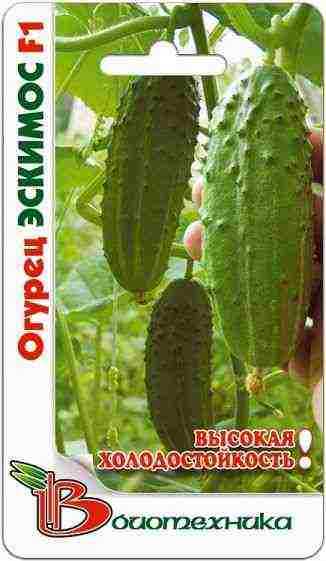
Cucumber variety "Suomi F1"
In order for the cucumbers to ripen under adverse weather conditions, they should be planted in the greenhouse using the seedling method. It is important to know when to plant cucumbers in a polycarbonate greenhouse. Seeds for seedlings are sown a month before the intended planting in open ground. Seedlings are planted in the greenhouse when the threat of morning frost has passed.
Valaam F1
An ultra-early parthenocarpic hybrid with a 36-day growing season is good for growing in northern areas with cool summers. The variety is resistant to temperature extremes and major diseases. The stem is powerful, practically has no side shoots. 5-6 cucumbers are tied in one knot. Fruits are dark green, with a waxy coating, large tubercles, up to 10 cm long, do not outgrow in the garden.The taste is juicy, without bitterness. Used for home canning and fresh consumption.
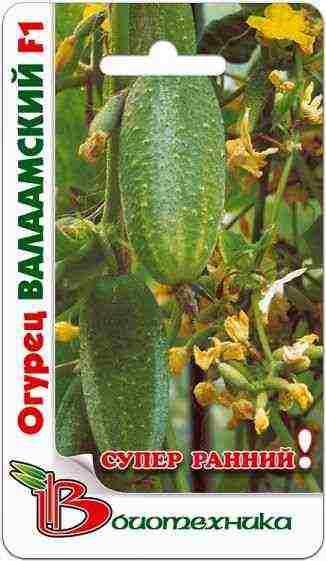
Cucumber variety "Valaam F1"
Orpheus F1
Orpheus F1 is a high-yielding early self-pollinated hybrid intended for cultivation in the middle lane. The growing season of the variety is 38-42 days from the appearance of the first shoots. Small lumpy, with white thorns, cucumbers of dark green color with white stripes, are up to 13 cm long and weigh up to 110 g. The palatability of the fruit is high. Juicy pulp with a fresh taste and pronounced aroma is characterized by the absence of bitterness. Strong plants, compact in size, with underdeveloped lateral shoots, resistant to cucumber mosaic and powdery mildew, and also perfectly tolerate heat and drought. The variety is unpretentious in care.
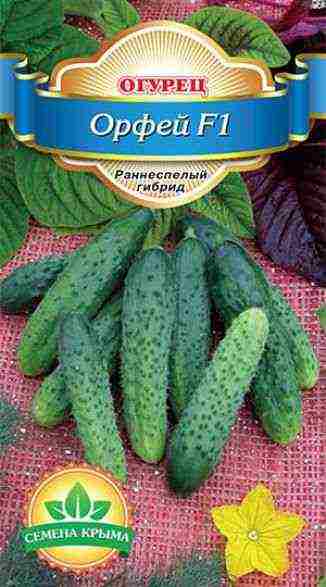
Cucumber variety "Orpheus F1"
If the soil around the plants is mulched with sawdust or dry grass, then you can forget about weeding for a long time. Also, mulch perfectly retains moisture for a long period in heat or drought, which will greatly simplify the care of the cucumber crop.
Cupid F1
Cupid F1 belongs to parthenocarpic hybrids of super early fruiting dates. Its growing season is 37-42 days. Plants of the hybrid are medium-sized, with medium climbing ability. Lateral shoots are underdeveloped. Up to 8 fruits can be tied in one knot. The advantage of plants is that they can form themselves. Cucumbers are dark green in color, slightly lumpy, with numerous thorns up to 10 cm long, have tender crunchy flesh without bitterness. Hybrid - resistant to weather changes, which allows you to grow it in the northern regions. It also tolerates heat well.
The fruits are highly transportable, retaining their presentation and taste for a long time. Usage is universal.
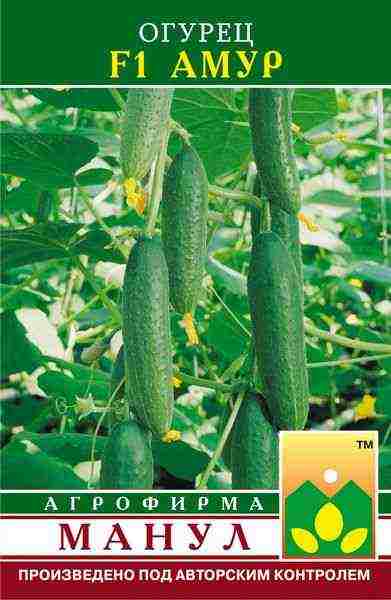
Cucumber variety "Amur F1"
The fruits of the Amur F1 variety are gherkins, but there have been cases of their overgrowth. So that the cucumbers have a given size and do not lose their excellent taste, it is recommended to harvest the crop 2-3 times a week.
Blik F1
This parthenocarpic has a growing season of 55-57 days from the first shoots. Hybrid plants - medium-sized... 4 fruits are capable of tying in one knot. The variety has a high yield and amicable fruiting. Cultivation regions - Ukraine, Moldova, southern regions of Russia. Cucumbers up to 14 cm long, smooth, dark green in color, have a pronounced fresh taste without bitterness. Designed for fresh use. The hybrid is moderately resistant to cucumber diseases.
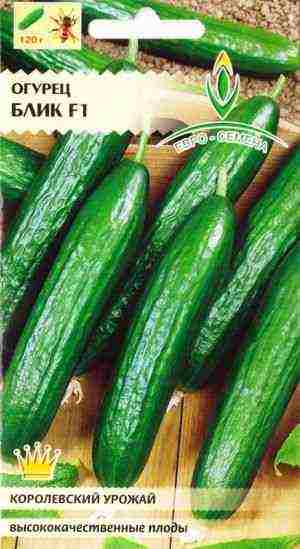
Cucumber variety "Blik F1"
Emerald F1
Emerald F1 - early maturing (growing season 34-45 days) parthenocarpic hybrid with vigorous plants of medium climbing. Due to its high cold hardiness and early fruiting, the variety thrives in cool climates. The fruits are large lumpy, dark green in color, up to 16 cm long, have excellent taste. They are used both for home canning and for preparing salads. The hybrid is resistant to major cucumber diseases. It is very popular with gardeners.
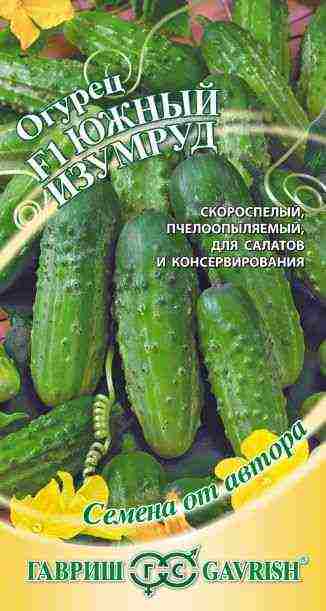
Cucumber variety "Emerald F1"
Glafira F1
Glafira F1 is a shade-tolerant early ripening parthenocarpic hybrid with a vegetation period of 43-45 days, like the Phoenix variety. The variety has some features of cultivation in greenhouses. It is necessary to break off the five lower nodes. The rest of the lateral shoots are pinched after 2-3 leaves. The main stem should be pinched at a height of 80-100 cm. The hybrid is resistant to adverse weather conditions and numerous diseases. Dark green large tuberous fruits are rather large up to 18 cm long and have excellent taste. Used for canning and fresh.
Due to its high shade tolerance, the variety takes root well in indoor conditions.
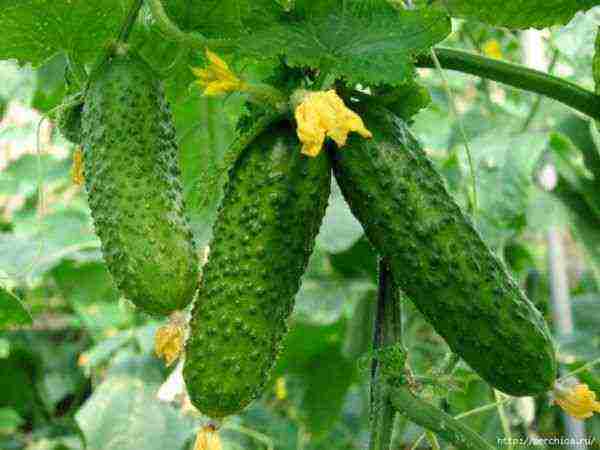
Cucumber variety "Glafira F1"
Despite the fact that the hybrid is shade-tolerant, in winter, when there is a short daylight hours, for its cultivation and worthy fruiting at home, additional artificial lighting is needed, which can be used as fluorescent lamps or LEDs.
Romance F1
Parthenocarpic hybrid Romance F1 is intended for growing in greenhouses. The variety has long-term fruiting. After the plants bear fruit on the main stem, the cucumbers begin to set on short side shoots. Fruits of presentable appearance, dark green in color with complex white pubescence, up to 12 cm long, have unsurpassed taste. Hybrid cucumbers - universal use.
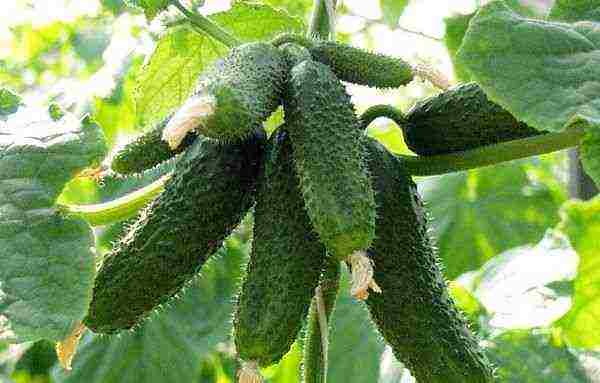
Cucumber variety "Romance F1"
The variety has a peculiarity - despite the fact that it is a parthenocarpic, the plants need an additional pollinator, which can be a hybrid F1 Bumblebee.
Alex gherkins
Alex F1 is a parthenocarpic hybrid originally from Holland with a growing season of 40-45 days. The plants of the hybrid are vigorous, fast-growing, with a strong root system. The yield of the variety is high. From 1 sq. m collect up to 25 kg of fruit. Cucumbers up to 10 cm long, almost smooth, with small tubercles, have a green uniform color and excellent taste without bitterness. Designed for pickles, pickling and fresh consumption... If you need specifically cucumbers for pickling and preservation, then popular varieties are described here. The hybrid is highly resistant to olive spot, powdery mildew and cucumber mosaic. Also tolerates extreme weather conditions such as drought. Other varieties of gherkins are presented in this article.
It is widely used for mass production for sale due to its good transportability, high yield and long shelf life of the fruit.
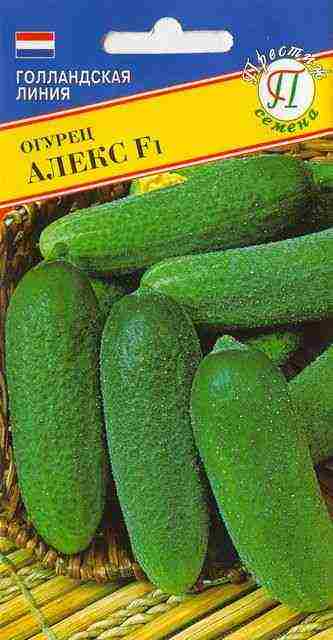
Cucumber variety "Gherkins Alex"
This variety of gherkins is widely used for making marinades. In order for the cucumbers to turn out tasty and crispy, you need to pick them without waiting for full ripening, when the length of the fruits reaches 6 cm. You need to pickle them immediately after picking or, in extreme cases, no later than a day later. Before pickling, the greens are soaked in very cold water for 6 hours, changing it several times. It is these cucumbers that will be the most crunchy.
Cheetah F1
Parthenocarpic early ripening (37-39 days) hybrid is characterized by high productivity and amicable fruiting. Lateral shoots are underdeveloped. Plants are medium-branchy, compact. The variety is resistant to almost all cucumber diseases, as well as to adverse weather conditions. Small-knobby white-thorn cucumbers up to 12 cm long, have high taste and pickling qualities.
Video
conclusions
It is not enough just to choose the right variety of cucumbers for the greenhouse. It is necessary to select the highest quality seeds from the numerous quantities offered by various manufacturers of planting material, and to manage not to run into a fake. Do not purchase seeds from unknown manufacturers or suspiciously packaged. There is no need to save on planting material: high-quality seeds produced by well-known brands, as a rule, are not cheap. Better to overpay and buy reliable material from which a rich harvest will grow than to buy a dubious cheap fake produced in some basement.
Also read about bush cucumbers for open ground and greenhouses.
Foreword
Cucumber is a worldwide annual herb belonging to the pumpkin family. When choosing varieties of cucumbers for greenhouses, you need to know the basic rules, following which you can get the largest harvest.
How to correctly determine the choice of cucumbers for greenhouses?
Breeders recommend planting new varieties of cucumbers along with proven old ones, which leads to higher yields of both types.
For growing cucumbers in greenhouses, their variety and method of pollination are of great importance.
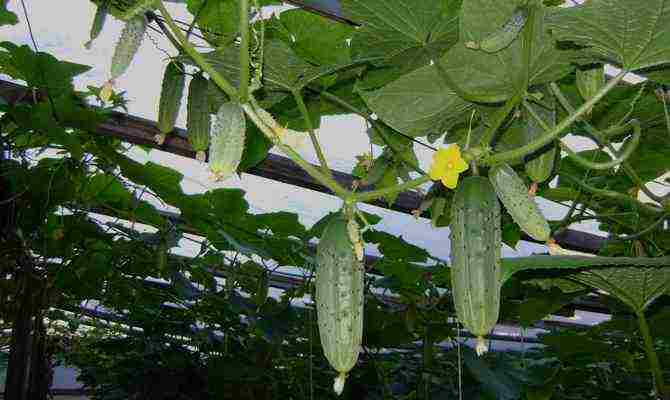
Growing cucumbers in a greenhouse
The most suitable for both varietal and hybrid greenhouse crops are parthenocarpic and self-pollinated varieties.
Parthenocarpic cucumber varieties have only female flowers and can be set without pollination. The fruits of such plants do not contain seeds. Best parthenocarpic cucumbers for greenhouses:
- Emerald City.
- Ant.
- Grasshopper.
- Okhotny Ryad.
- First grade.
- Buyan.
- Alphabet.
- Green wave.
- Ensign.
- Marina Grove.
- Dragonfly.
- Balalaika.
- Bouquet.
- Three tankers.
- Clean ponds.
- Focus.
- Anyuta.
- Heroic strength.
- Toddler.
- Matryoshka.
- Petrel.
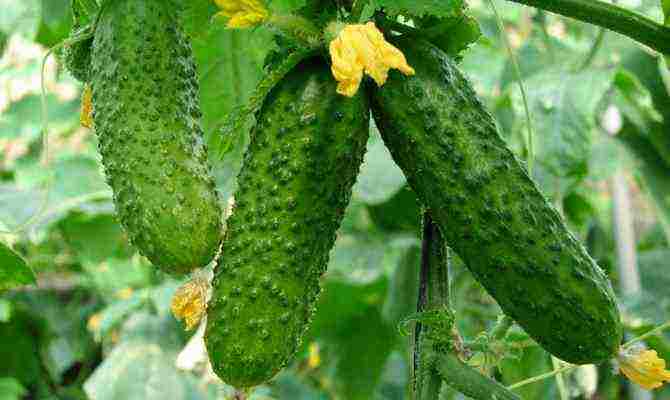
Parthenocarpic varieties of cucumbers
Self-pollinated varieties contain both female and male traits, so they can pollinate independently. The best varieties of cucumbers for greenhouses:
- Amur.
- Elegant.
- Dynamite.
- Ginga.
- Hermann.
- Zozulya.
- Orpheus.
- Muromsky.
- Competitor.
- Dawn.
- Son-in-law.
- Emelya.
- Surprise.
- Cheetah.
- Moscow greenhouse.
How to choose the right variety of greenhouse cucumbers for cooking?
When making choices among a variety of cultures, we first of all think about how we will use them in the future. Depending on this, you need to choose exactly the variety of cucumbers that suits you best. Here, preference should be given to both appearance, shape and texture.
According to the degree of suitability for food, the following types of greenhouse cucumbers are distinguished:
- salad;
- canned (suitable for pickling and pickling);
- universal.
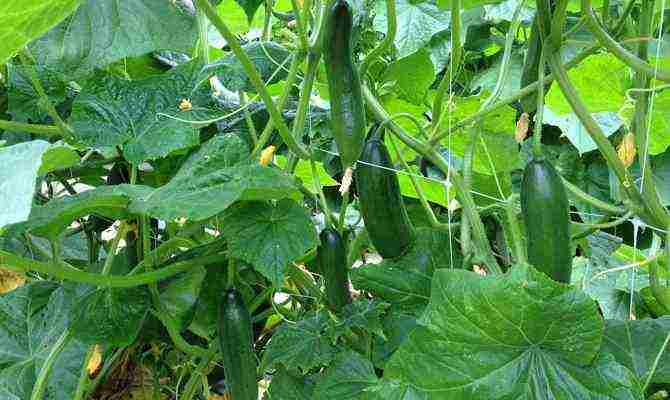
Universal vegetables for pickling and pickling
When buying cucumber seeds, the packaging always indicates in what form it is best to eat them. For example, when fresh, it is better to eat high-yielding greenhouse cucumbers, which include:
- Anyuta.
- White angel.
- Athlete.
- Solar.
- Orlik.
- Courage.
- Masha.
- Vicent.
- Hercules.
- Danila.
- Crystal.
- Makar.
- Cartoon.
- Fawn.
- Martha.
- Tsarsky.
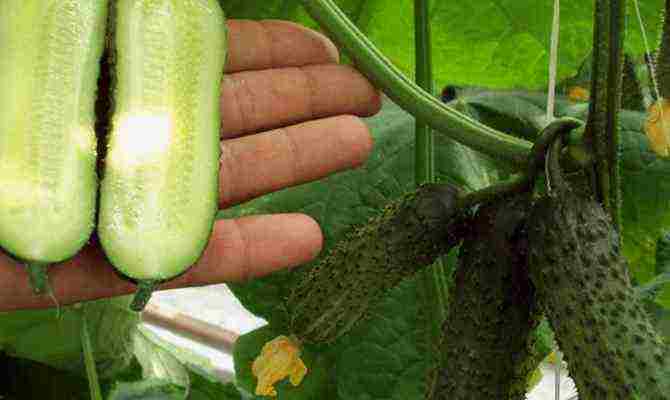
High-yielding greenhouse salad fruits of the "Danila" variety
Their flesh is more juicy and tasty, and the skin, on the contrary, is thicker. They are somewhat larger in size than the rest and have lighter spines on the surface.
For canning, pickling and pickling, it is necessary to choose varieties of cucumbers with thin skin and small sizes, then they are better amenable to heat treatment and will be very tasty. For example, the best varieties of greenhouse cucumbers are suitable for canning, pickling and pickling:
- Adam.
- Moscow dude.
- Blessed.
- Hector.
- Buran.
- Legend.
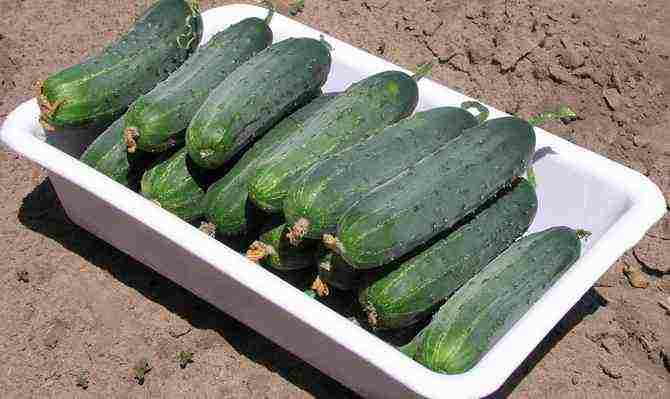
Small cucumbers with thin skin
If you want to eat fresh cucumbers and preserve them, the universal type is the best choice. Their skins are of medium thickness and lend themselves well to heat treatment, and they are also very pleasant to the taste. For example, according to gardeners, the best greenhouse varieties of universal cucumbers are:
- Annushka.
- Trump card.
- Sunrise.
- Three tankers.
- Petite.
- Thumb boy.
- Corporal.
- Moravian Gherkin.
- Blessed.
- Northerner.
When do greenhouse cucumbers ripen?
Greenhouse cucumbers can be enjoyed all year round.
To do this, you need to know which varieties ripen and at what time. Breeders involved in their cultivation and breeding distinguish 4 groups. Early ripe cucumbers are excellent cucumbers that ripen very quickly, in just 40 - 42 days. The best ones are:
- Emelya.
- Anyuta.
- Courage.
- Evita.
- Masha.
- Leandro.
Early ripening - one of the most favorite varieties of cucumbers for children. Their ripening period is 44 - 46 days. The most popular were:
- Balagan.
- Zozulya.
- Connie.
- Matilda.
- Marinda.
- Regia.
- Claudia.
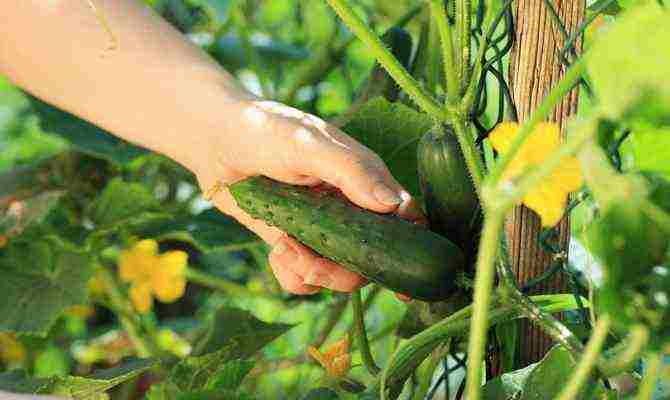
Early ripening variety "Zozulya"
Mid-season - ideal for canning, pickling and pickling. Their ripening period is 47 - 50 days. Among them, the most popular are:
- Droplet.
- Nezhinsky.
- Santana.
- Brownie.
Late ripening - ripen in 50 days and are also intended for all types of canning and pickling.
For greenhouses, you should choose special, most suitable varieties of cucumbers. Due to the different microclimate in the greenhouse, as well as the drop in humidity, diseases can occur in cucumbers. The most common among these are powdery mildew, gray or white rot.
The new varieties are the most resistant to diseases and are excellent for greenhouse conditions. They are distinguished by their high yield and unpretentious cultivation.
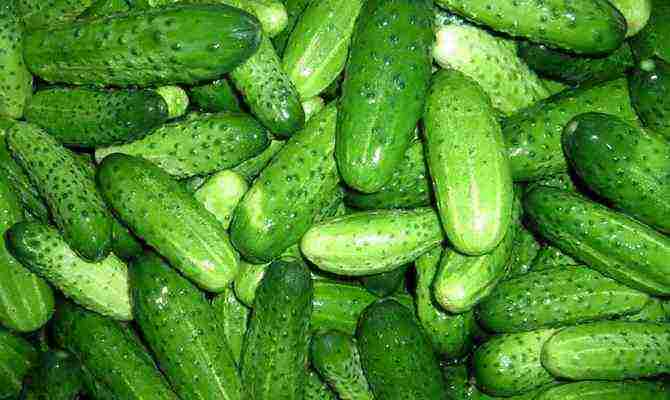
High-yielding unpretentious variety
Modern breeders recommend choosing exclusively climbing rather than bush varieties for planting in a greenhouse. This is due to the fact that cucumber whips are more convenient to form and tie in the greenhouse, moreover, they take up less space and let in more sunlight.
Cucumbers are thermophilic plants that thrive in warm greenhouses with moderate humidity. Caring for them does not require much effort, especially if your greenhouses are equipped with drip irrigation. It is necessary to irrigate them daily, but very carefully, because they have a weak root system, located almost on the surface, and it is easy to damage it.
During fruiting and flowering, cucumbers need additional organic feeding. It is better to feed the plant in the evening.
Rate the article:
(0 votes, average: 0 out of 5)
